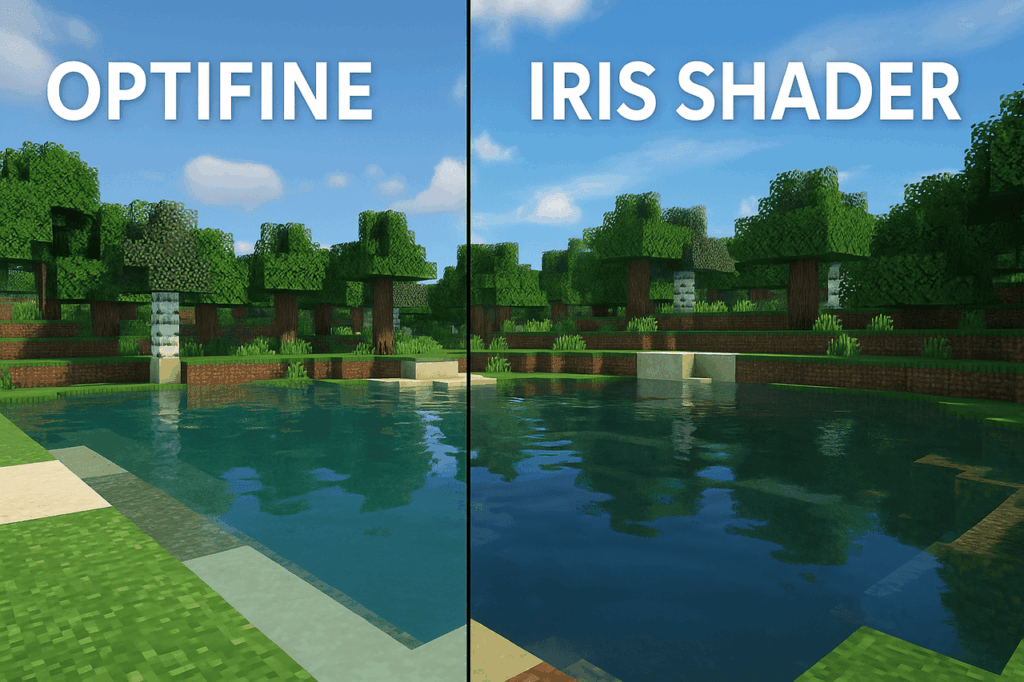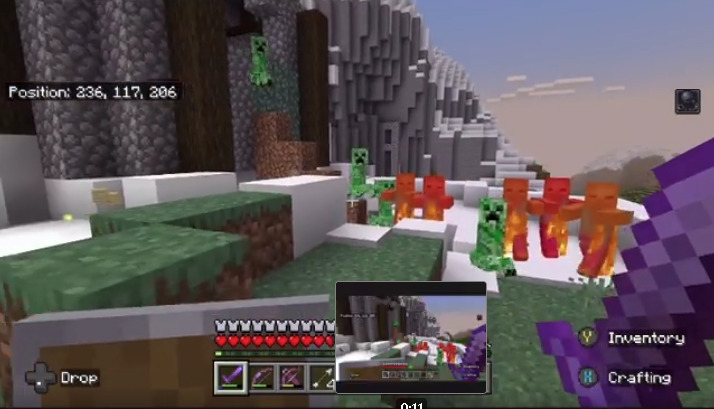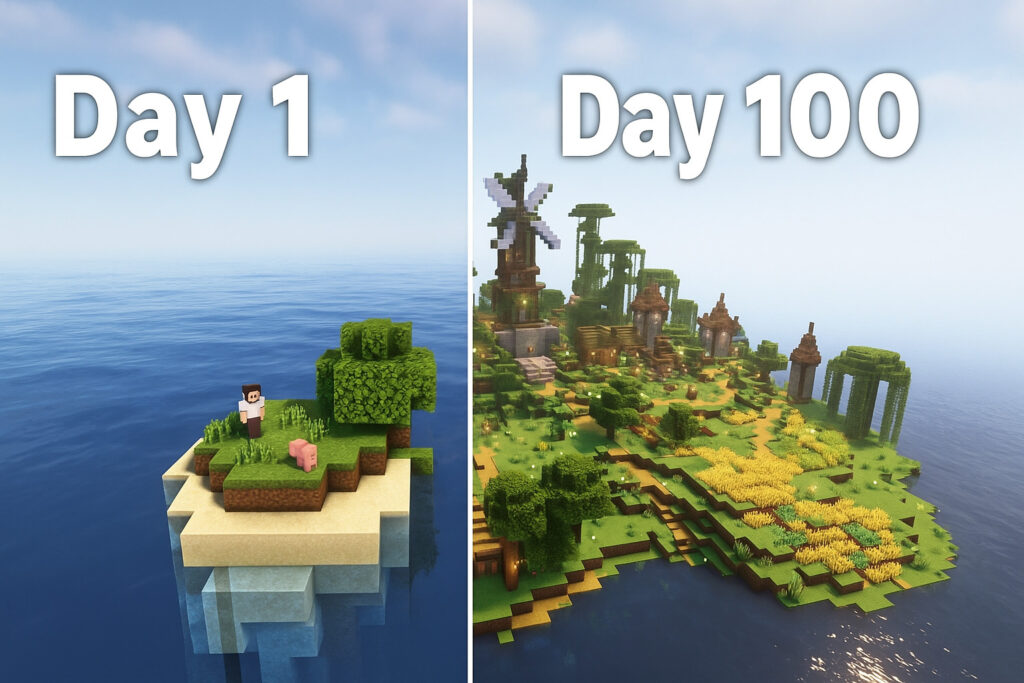Minecraft is an open-ended sandbox game that thrives on creativity, but let’s be honest—its default graphics aren’t always the most impressive. That’s where shader packs come in, bringing shadows, lighting effects, water reflections, waving grass, and more realism to the game. But to use shaders, you need the right tool to load them.
For years, Optifine was the undisputed champion of Minecraft shader support. However, a new contender called Iris Shader has gained popularity rapidly, especially among modded Minecraft players.
So in 2025, which one should you use: Optifine or Iris Shader? Let’s break it down.

1. What Is Optifine?
Optifine is a powerful Minecraft optimization tool. It’s been around since the early days of Minecraft and is well-known for:
- Boosting FPS (frames per second)
- Adding support for HD textures and shaders
- Providing advanced graphics options
- Making Minecraft playable on low-end machines
Optifine also allows you to install shader packs directly via its built-in shader menu, making it easy to enhance visuals.
2. What Is Iris Shader?
Iris is a newer alternative developed to work specifically with the Fabric mod loader (and now also compatible with Quilt). It was designed to:
- Be open-source and modular
- Offer full compatibility with Sodium, the high-performance rendering mod
- Provide better mod compatibility than Optifine
- Support modern shader packs (especially BSL, SEUS, Sildur’s, etc.)
Many players and developers see Iris as a lightweight, modern replacement for Optifine.
3. Performance: Who Wins in FPS?
When it comes to FPS (frames per second), both perform differently depending on your mod setup:
- Optifine is generally stable but not as fast when combined with lots of mods. It doesn’t play well with Sodium or other performance-enhancing Fabric mods.
- Iris + Sodium can significantly outperform Optifine, especially on modern systems. The combination is often 30–50% faster in many cases.
If raw performance matters, Iris + Sodium is the better choice in 2025.
4. Mod Compatibility
Optifine is not compatible with many Fabric-based mods. It’s a self-contained mod, which means it often conflicts with other performance or graphics mods.
Iris, on the other hand, was built for compatibility:
- Works well with Sodium, Lithium, Phosphor, and other Fabric mods
- Doesn’t require changing your entire setup
- Easier to maintain in a modded environment
For modded Minecraft, Iris is the clear winner.
5. Shader Support
Both tools support many of the same shader packs. However:
- Optifine has broader support for legacy shader packs.
- Iris focuses on modern shader packs and works best with newer shader development standards like GLSL 1.3+.
In most cases, popular shaders like BSL, SEUS Renewed, and Complementary Shaders work just fine on both. But if you’re using newer shader packs built for modern standards, Iris tends to handle them better.
6. User Interface and Usability
- Optifine has a user-friendly GUI that’s been refined over the years. It offers toggles, sliders, and real-time previews.
- Iris also has a clean interface, though slightly more technical for new users.
That said, both are easy to install if you’re following instructions. Optifine uses its own launcher or can be added to Forge, while Iris works best with Fabric and Mod Menu.
7. Update Frequency and Support
- Optifine updates are usually slower. It takes a while to catch up with new Minecraft versions. For example, it often lags behind major updates like 1.20, 1.21, etc.
- Iris updates much faster thanks to its active open-source community. It supports snapshots and new releases quickly.
If you’re the kind of player who always wants to try the latest version of Minecraft, Iris will get you there faster.
8. Which One Is More Future-Proof?
Optifine was the king for many years, but its closed-source nature and compatibility issues are becoming outdated.
Iris, backed by a vibrant modding community and built on modern coding practices, is quickly becoming the new standard. Its seamless integration with Sodium gives it an edge in both visuals and performance.
9. When Should You Choose Optifine?
Despite its limitations, Optifine may still be the better option if:
- You play mostly vanilla Minecraft
- You don’t want to deal with Fabric/Forge loaders
- You use shader packs that require Optifine-specific features
- You’re on an older system or prefer simplicity
10. When Should You Use Iris Shader?
Iris is ideal if:
- You’re using Fabric-based modpacks
- You care about high FPS and smooth visuals
- You want compatibility with Sodium and other optimization mods
- You’re looking for better support for modern shaders
Final Verdict: Optifine or Iris Shader in 2025?
| Feature | Optifine | Iris + Sodium |
|---|---|---|
| FPS Performance | Good | Excellent |
| Mod Compatibility | Low (Forge only) | High (Fabric-based) |
| Shader Support | Broad legacy support | Best for modern packs |
| Ease of Use | Very simple | Simple with Mod Menu |
| Update Speed | Slow | Fast and community-driven |
👉 Our recommendation: If you’re using mods or care about performance, go with Iris + Sodium. If you’re just trying out shaders on vanilla Minecraft, Optifine is still a decent choice.
💬 What Do You Use?
Have you tried both Optifine and Iris? What’s your experience with performance and shader packs? Drop your thoughts in the comments below — and don’t forget to subscribe to our newsletter for more Minecraft guides!



